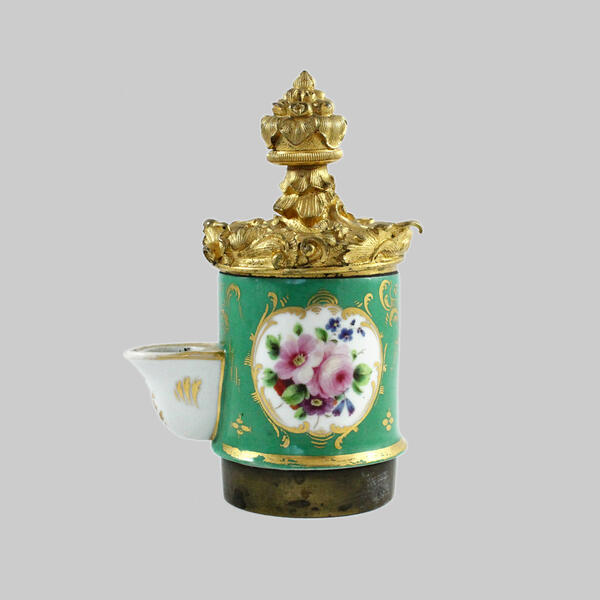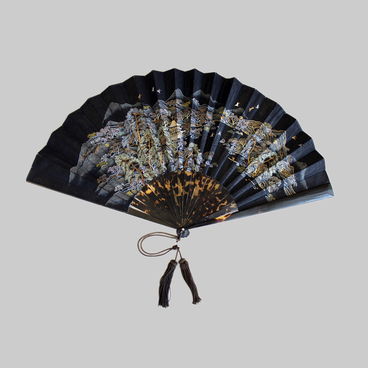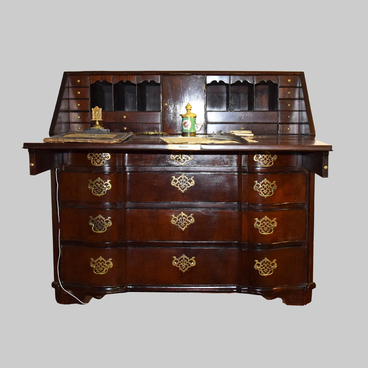The first inkwells appeared in ancient times with the invention of ink, as there was a need for ways to store them. One of the first inkwells was found during archaeological excavations in the ancient Roman city of Herculaneum, destroyed after the eruption of Mount Vesuvius and buried under a large layer of volcanic ash many centuries ago. An inkwell in the form of a clay bowl retained a dark sediment at the bottom. Research has shown that this was old ink made of soot and diluted with oil.
In the Middle Ages, inkwells were made of leather, horn and metal. The British began to release them from glass. They managed to develop a new safe inkwell.
The neck of the inkwell had a special cone-shaped funnel that did not allow ink to flow out, even if the vessel was overturned. In different countries, depending on the era, inkwells of various shapes and sizes were made using porcelain, stone, metal or polymers.
The inkwell displayed in the Decembrists in Yalutorovsk exhibit is made of porcelain, bronze, glaze and gilding. Presumably it was made at the Alexei Popov’s plant in the village of Gorbunovo, Dmitrovsky district, Moscow governorate in the 1840s-1850s.
The inkwell is made in the form of a cylinder with a groove on the side. The groove is a special device in the ink tank for dipping the pen into the ink. They installed it on a metal base, and on top it was covered with a metal lid decorated with a relief floral ornament. The surface of the inkwell is painted. On a green background, there are two curved reserves an area of the image that is not painted over during drawing. The reserves include bouquets of pink, red, blue, lilac flowers. Around the reserves and between them, you can see golden curves. The white groove was decorated with a golden outline and branches.
A cylindrical piston is installed inside the ink tank. It attaches to the lid and presses on the ink, which then enters the groove through the circular hole.
This inkwell was purchased in the antique department of a bookstore in Moscow for an exposition in the house of M.I. Muravyov-Apostol.
In the Middle Ages, inkwells were made of leather, horn and metal. The British began to release them from glass. They managed to develop a new safe inkwell.
The neck of the inkwell had a special cone-shaped funnel that did not allow ink to flow out, even if the vessel was overturned. In different countries, depending on the era, inkwells of various shapes and sizes were made using porcelain, stone, metal or polymers.
The inkwell displayed in the Decembrists in Yalutorovsk exhibit is made of porcelain, bronze, glaze and gilding. Presumably it was made at the Alexei Popov’s plant in the village of Gorbunovo, Dmitrovsky district, Moscow governorate in the 1840s-1850s.
The inkwell is made in the form of a cylinder with a groove on the side. The groove is a special device in the ink tank for dipping the pen into the ink. They installed it on a metal base, and on top it was covered with a metal lid decorated with a relief floral ornament. The surface of the inkwell is painted. On a green background, there are two curved reserves an area of the image that is not painted over during drawing. The reserves include bouquets of pink, red, blue, lilac flowers. Around the reserves and between them, you can see golden curves. The white groove was decorated with a golden outline and branches.
A cylindrical piston is installed inside the ink tank. It attaches to the lid and presses on the ink, which then enters the groove through the circular hole.
This inkwell was purchased in the antique department of a bookstore in Moscow for an exposition in the house of M.I. Muravyov-Apostol.



